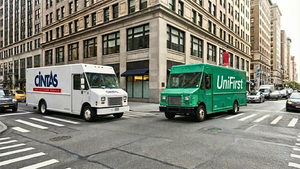REDWOOD CITY, CA / ACCESSWIRE / July 6, 2021 / Avinger, Inc. (NASDAQ: AVGR), a commercial-stage medical device company marketing the first and only intravascular image-guided, catheter-based system for diagnosis and treatment of Peripheral Artery Disease (PAD), today announced the submission of a 510(k) application to the U.S. Food & Drug Administration (FDA) for a new Pantheris clinical indication for the treatment of in-stent restenosis (ISR) in the lower extremity arteries.
Highlighting the importance of this submission, Jeff Soinski, Avinger's President and CEO commented, "We are extremely pleased with this milestone and the initial clinical data generated from the INSIGHT trial that supports the 510(k) submission. The safe and effective treatment of in-stent restenosis is an important clinical benefit, which we believe will provide a highly differentiated competitive advantage for Avinger's atherectomy products. With the large number of stents deployed in the lower extremity arteries, and the propensity for recurrence over a 2-to-3-year timeframe, the sheer number of ISR procedures performed in the U.S. each year provides a significantly expanded market opportunity for Pantheris, if our 510(k) application for this additional clinical indication is approved."
With approximately 200,000 stents placed in the femoral and popliteal arteries annually, and 30% to 40% of these stents expected to develop in-stent restenosis within 3 years of implantation, the treatment of in-stent restenosis represents both a significant market and healthcare burden.1 In-stent restenosis occurs when a blocked artery previously treated with a stent becomes narrowed again, reducing blood flow. Physicians often face challenges when treating ISR both in terms of safety and efficacy. From a safety standpoint, limitations in imaging techniques, such as X-ray fluoroscopy, and the inability to control the directionality of other treatment modalities creates the concern of potentially impacting the integrity of the stent during the intervention. In terms of efficacy, current therapies for in-stent restenosis, such as balloon angioplasty, have high rates of recurrent renarrowing within stents.
To support the FDA submission for this new indication, Avinger provided data generated from the INSIGHT trial, a prospective, global, single arm, multi-center study to evaluate the safety and effectiveness of the Pantheris atherectomy system for treating in-stent restenosis in lower extremity arteries. Sean Janzer, M.D., an interventional cardiologist, and Glen Schwartzberg, M.D., a vascular surgeon, served as co-principal investigators of the study.
"The treatment of in-stent restenosis represents a significant clinical challenge for interventionalists, with very limited safe and effective options available," commented Dr. Schwartzberg. "Other technologies risk a potentially adverse interaction with the stent struts due to their lack of onboard image-guidance or mechanism of action, while others only compress the blockage against the stent and do not actually remove the occlusive tissue. The imaging system mounted on Pantheris combined with the directional excision mechanism allows the operator to target only the blockage and avoid the clearly delineated stent struts."
Dr. Janzer noted, "One of the primary goals with these patients is to avoid or prolong the need for repeat interventions, invasive surgeries, and amputations. The precision provided by Pantheris can help interventionalists achieve this objective and provide better outcomes for the complex condition of in-stent restenosis, both in terms of acute safety standpoint and longer-term efficacy."
Avinger's proprietary Lumivascular technology allows physicians, for the first time ever, to see from inside the artery during an atherectomy or CTO crossing procedure by using an imaging modality called optical coherence tomography, or OCT, that is displayed on Avinger's Lightbox console. Physicians performing atherectomy or crossing CTOs with other devices must rely solely on X-ray and tactile feedback to guide their interventions while treating complicated arterial disease. With the Lumivascular approach, physicians can more accurately navigate their devices and treat PAD lesions, due to real-time OCT images generated from inside the artery, without exposing healthcare workers and patients to the negative effects of ionizing radiation.
1Lichtenberg MK, Carr JG, Golzar JA. "Optical coherence tomography: guided therapy for peripheral artery disease." The Journal of Cardiovascular Surgery. 04 April 2017, 58(4):518-527.
About Avinger, Inc.
Avinger is a commercial-stage medical device company that designs and develops the first and only image-guided, catheter-based system for the diagnosis and treatment of patients with Peripheral Artery Disease (PAD). PAD is estimated to affect over 12 million people in the U.S. and over 200 million worldwide. Avinger is dedicated to radically changing the way vascular disease is treated through its Lumivascular platform, which currently consists of the Lightbox imaging console, the Ocelot and Tigereye™ family of chronic total occlusion (CTO) catheters, and the Pantheris® family of atherectomy devices. Avinger is based in Redwood City, California. For more information, please visit www.avinger.com.
Follow Avinger on Twitter and Facebook.
Forward-Looking Statements
This news release contains forward-looking statements within the meaning of Section 27A of the Securities Act of 1933 and Section 21E of the Securities Exchange Act of 1934 and the Private Securities Litigation Reform Act of 1995. These forward-looking statements include statements regarding the timing and potential approval of our 510(k) application for a new Pantheris clinical indication, the potential benefits of our products for patients and healthcare providers, our ability to expand into the ISR treatment market, the potential market opportunities for Pantheris if the 510(k) application is approved, and the development and regulatory of other products. Such statements are based on current assumptions that involve risks and uncertainties that could cause actual outcomes and results to differ materially. These risks and uncertainties, many of which are beyond our control, include our dependency on a limited number of products; the resource requirements related to Pantheris, TIGEREYE and our Lightbox imaging console; the outcome of clinical trial results; as well as the other risks described in the section entitled "Risk Factors" and elsewhere in our Annual Report on Form 10-K filed with the Securities and Exchange Commission on March 11, 2021. These forward-looking statements speak only as of the date hereof and should not be unduly relied upon. Avinger disclaims any obligation to update these forward-looking statements.
Investor Contact:
Mark Weinswig
Chief Financial Officer
Avinger, Inc.
(650) 241-7916
ir@avinger.com
Matt Kreps
Darrow Associates Investor Relations
(214) 597-8200
mkreps@darrowir.com
SOURCE: Avinger, Inc.
View source version on accesswire.com:
https://www.accesswire.com/654074/Avinger-Announces-510k-Filing-for-New-Pantheris-In-Stent-Restenosis-Indication





